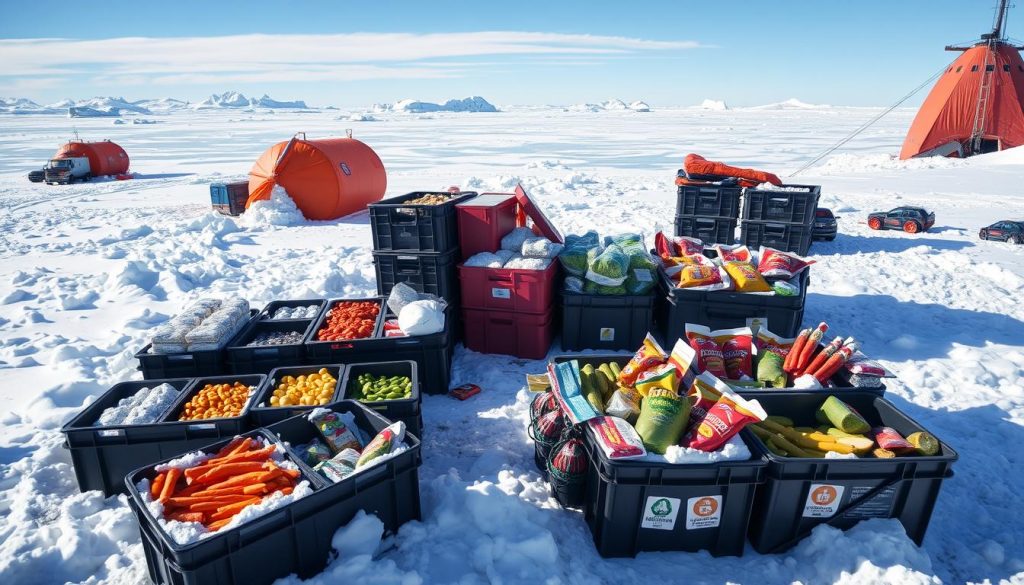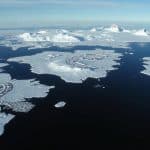Antarctica’s tough environment means research stations have special needs. Scientists and researchers need a strong food supply in this remote area. There’s a big chance for supply businesses in this unique market. They can help operations and make life better for the workers. By knowing how these stations work, new ideas can come up. These ideas should meet the market’s needs and protect the ecosystem.
Understanding the Unique Needs of Antarctica’s Research Stations
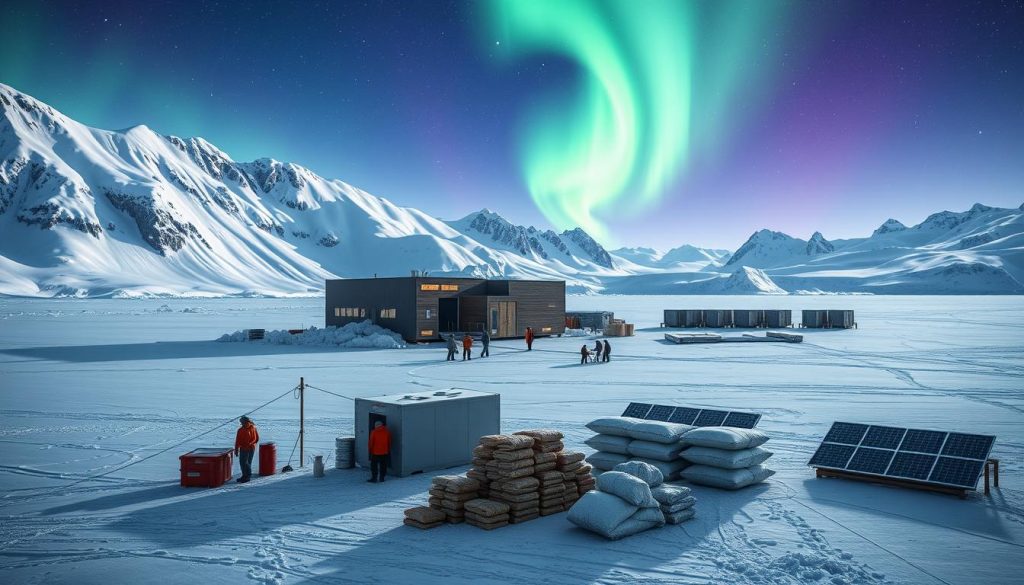
Antarctica’s research stations face distinct challenges due to their unique setting. Harsh conditions demand special supplies for comfort and efficiency. Getting to know these needs is crucial for suppliers.
Researchers deal with extreme cold, affecting their daily tasks. They need strong equipment and stable, nutritious food. Dependable communication tools are essential for connecting with others.
The stations’ isolation makes supplying them complex. Suppliers must plan carefully to ensure goods arrive on time. Recognising these challenges helps suppliers create effective strategies for the Antarctic.
Food and Supply Business Ideas for Antarctica’s Research Stations

Research stations in Antarctica need special food supplies for extreme conditions. Knowing what supplies are essential helps businesses support the researchers. They can ensure the smooth running of daily tasks in the cold environment.
Examples of Essential Supplies
Important food items for Antarctica include:
- Freeze-dried meals for easy and nutritious options.
- Canned goods that last long and offer variety.
- High-calorie snacks that give energy for outdoor work.
Apart from food, crucial supplies include medical and hygienic products. Personal protective gear and warm clothing are also key. Businesses need thorough research to meet the specific needs of each station.
Adapting Products for Extreme Conditions
Making products fit for extreme conditions is crucial. Packaging must protect against the cold and wind. This keeps the food fresh.
- Strong, insulating packaging is needed for quality maintenance.
- Vacuum-sealed meals help keep food fresh and tasty.
- Companies should also design insulated containers for Antarctic challenges.
By focusing on these logistic challenges, businesses can boost the reliability of their products. This improvement greatly helps the success of supply efforts in Antarctica.
Logistical Challenges of Supplying Antarctica
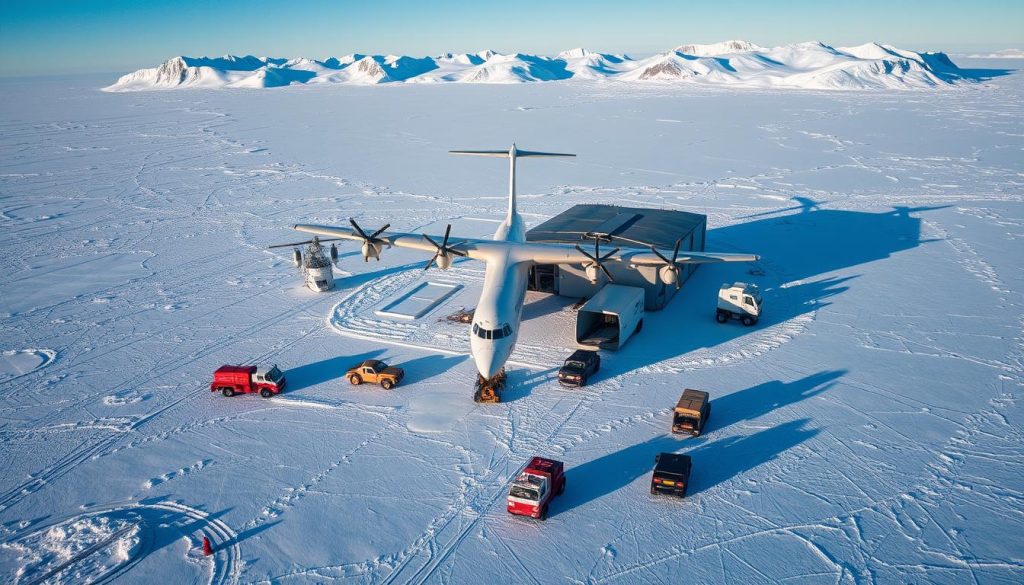
Supplying Antarctica with essentials is quite tough, mostly because of transport issues. Most supplies arrive by ship or plane, which the unpredictable weather can easily disrupt. This harsh environment makes careful planning crucial.
There’s only a small window for delivering supplies, which makes things even trickier. Delays can mess up the entire supply chain in these isolated spots. Plus, there’s not much room for storage at the research stations, meaning everything must be well-organised to avoid wasting supplies.
Transport costs are another big problem. Getting goods to such a remote place is expensive, especially with the need to protect the environment. Smart budgeting and resource use are key to making sure supplies get to where they’re needed without too much loss.
Innovative Food Solutions for Remote Stations
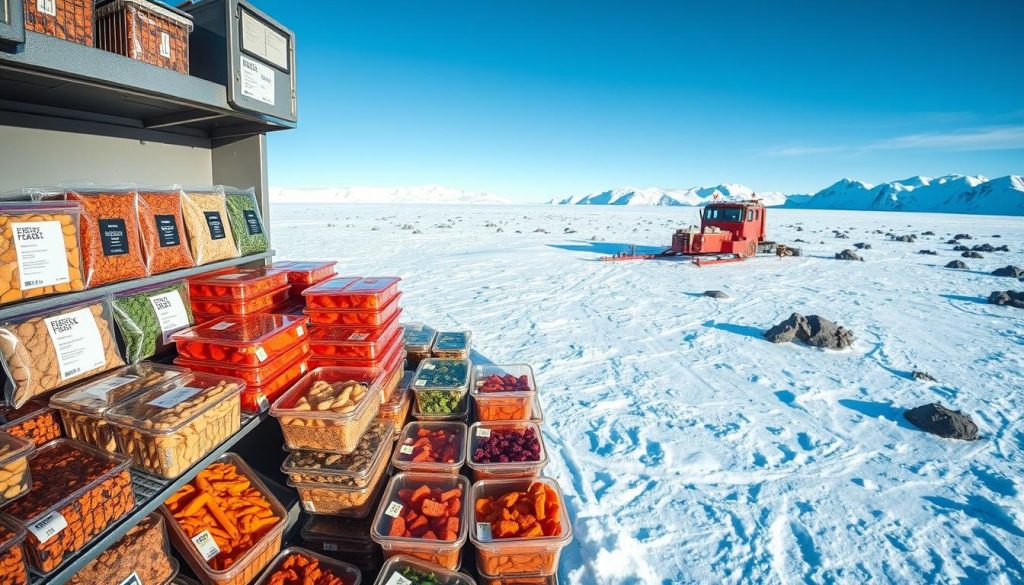
Getting food to Antarctica needs clever methods. Freeze-dried items and foods that last a long time are key. They make sure researchers have healthy food for their long missions. These foods are perfect and efficient for the tough conditions of remote areas.
Freeze-Dried Nutrition Options
Freeze-dried foods are a top solution for nutrition in Antarctica. They’re made using special methods that keep the food’s goodness but make them lighter and smaller. The main positives are:
- They can last over two years.
- They’re light, which is great for tough transport conditions.
- They keep their nutritional value, supporting the hard work of researchers.
You can find many freeze-dried foods, from fruits and veggies to complete dishes. These help meet the different eating needs of research teams.
Long-Shelf-Life Products
Foods that last a long time are essential for Antarctic work. These foods, like canned items and dry meals, don’t need to be kept cold. They help scientists stay nourished when new supplies can’t come. These foods are known for:
- Strong packaging that can handle cold.
- They are easy to make, letting scientists quickly eat and get back to work.
- Their balanced mix of calories and nutrients.
Choosing these foods affects the scientists’ diets and how well they do during their isolated missions. These food innovations are vital for the success of Antarctic research.
Sustainable Business Practices in Antarctica
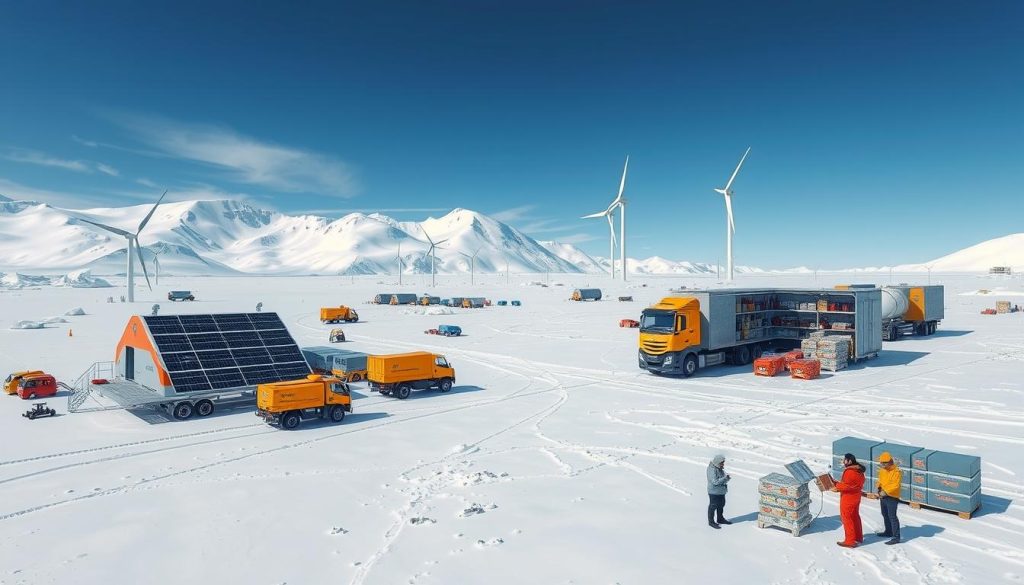
As people become more aware of the environment, businesses in Antarctica need to be green. They must focus on eco-friendly supplies and care about their impact on nature. This approach helps companies grow and protect the Antarctic environment. It also makes their operations more sustainable, which is good for both nature and profits.
Environmental Considerations
Businesses supplying to Antarctica must look after the local ecosystem. They should use eco-friendly materials and reduce waste. Adopting renewable energy for transport and storage is also key.
- Sourcing eco-friendly materials for packaging and products.
- Reducing waste through efficient inventory management.
- Integrating renewable energy sources in supply transport and storage.
Understanding the Antarctic environment is vital for supply chain management. The goal is to keep the ecosystem stable while running smooth operations.
Reducing Carbon Footprints
Transporting goods to Antarctica creates a lot of carbon emissions. To reduce these, companies can:
- Utilise more efficient transport methods that minimise fuel consumption.
- Optimise routes to reduce travel distance.
- Selecting suppliers committed to green logistics practices.
These efforts make businesses more sustainable and environmentally friendly. By adopting these strategies, companies can lead in eco-friendly Antarctic supply. They also help in preserving the region.
Potential Markets for Supply Businesses
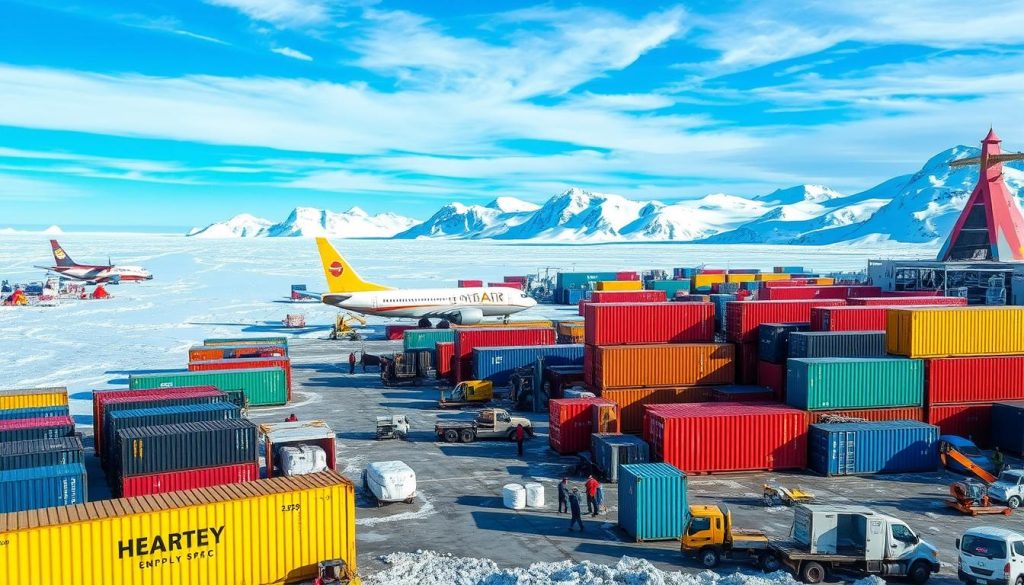
Businesses that supply Antarctic research stations have lots of markets to explore. The changing nature of Antarctic research funding creates a special chance for suppliers. They can match their products with what research groups need. Funding from governments and other sources can change, affecting what research stations buy.
Knowing about these funding changes helps suppliers plan their stock better. This way, they can always meet the needs of research places all year. Working together with universities and research groups helps both sides. It can make the supply business more successful.
- Define key partnerships with research institutions to gain insights on upcoming projects and required supplies.
- Monitor trends in Antarctic research funding to optimise offerings in line with available budgets.
- Explore tailored products that cater specifically to the needs of researchers operating in extreme conditions.
- Leverage innovative solutions to attract attention within niche markets focused on Antarctic exploration.
As the demand for special supplies grows, businesses in this field need to stay flexible and informed. This is how they can find the best chances and make their mark in the market.
Utilising Local Resources for Station Supplies

Using local resources for supplies at Antarctic stations brings big benefits. It makes things more sustainable and cost-effective. Working together with local producers means more fresh food for these far-off places. When we use Antarctic resources at their best times, we get more variety and availability.
Collaborations with Local Producers
Building partnerships with local farmers is key. These relationships cut down on transport costs and lower carbon emissions. Businesses can:
- Directly source ingredients from nearby places.
- Enter into partnerships for better supply chains.
- Share resources for packaging and sending out goods.
These alliances help local economies and Antarctic food production. They ensure a constant supply of fresh ingredients.
Leveraging Seasonal Availability
Antarctica’s unique weather opens up chances for seasonal sourcing. Knowing when things grow helps businesses stock up on fresh supplies better. Main approaches include:
- Picking crops that do well in certain months.
- Planning deliveries with local producers.
- Using new storage ways to keep seasonal items fresh.
This careful planning boosts the use of local resources. It also makes the food supply to stations more sustainable. By working together, Antarctic research places get better access to fresh, healthy food that fits their extreme conditions.
Technology in Food Supply Management
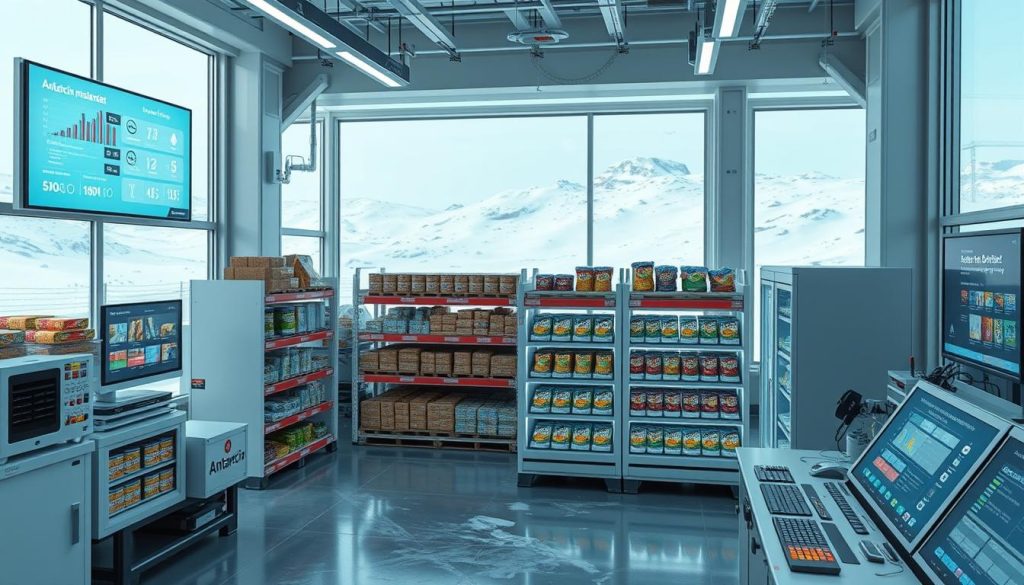
Technology is key in managing food supplies in Antarctica’s challenging conditions. Efficient inventory systems ensure food is always available, reducing waste and spoilage. Real-time tracking greatly improves logistics, making supply chains more effective.
Tracking Systems for Inventory
In remote areas, keeping track of inventory is vital. Advanced tracking systems offer real-time insight into food stocks. This helps keep Antarctic storage well-stocked. By using these systems, operations become more efficient and food waste decreases.
Smart Solutions in Temperature Control
Extreme climates call for effective food preservation. Advanced tech employs sensors for monitoring temperatures in stores and transport. Temperature-controlled containers adapt to changing environments. This tech prevents food spoilage, ensuring reliable supplies to Antarctica.
Partnerships with Research Institutions
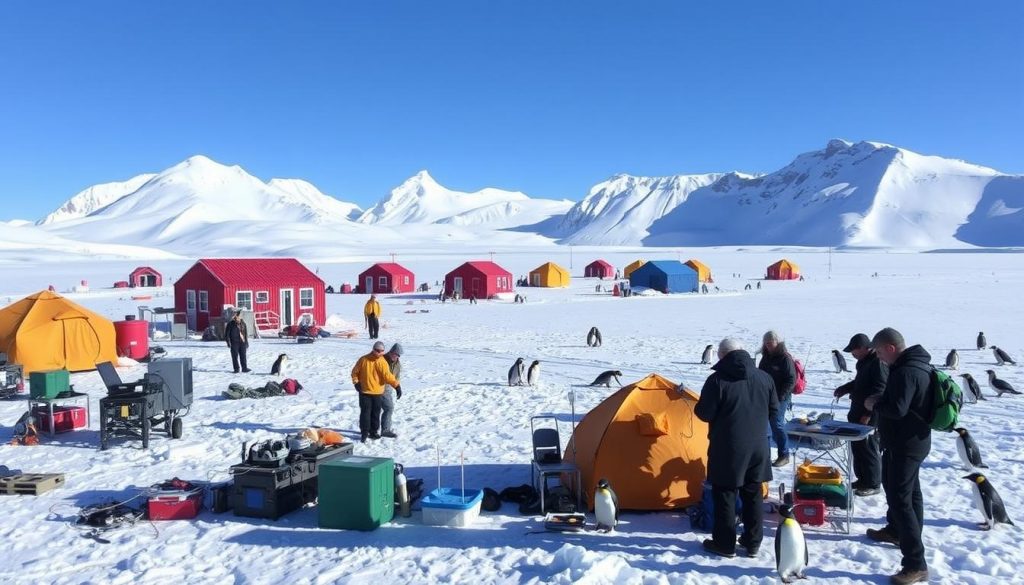
Forming strong ties with research groups is key for businesses focused on Antarctic needs. These partnerships offer deep insights into what is needed in tough places. Suppliers can then make sure their offerings match the needs of research bases more closely.
Working together with these institutions leads to creating unique solutions. This collaborative effort might include:
- Sharing new technology to make supplies more efficient.
- Working on projects that care for the environment.
- Using science to make products that withstand extreme weather.
By working together, suppliers not only do better in the market. They also help make important research in Antarctica successful.
Case Studies of Successful Supply Businesses
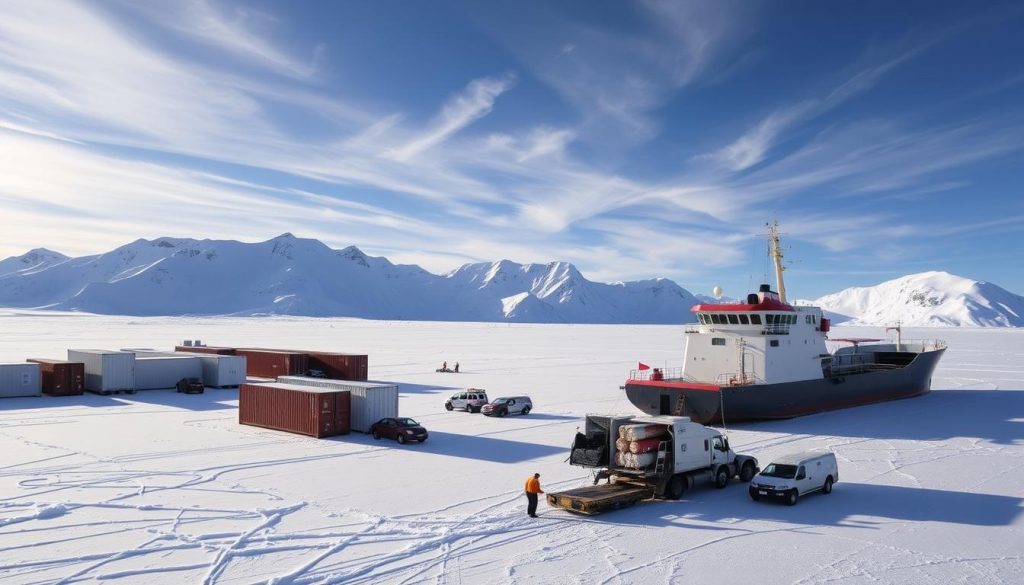
Looking into supply businesses that do well in supporting Antarctica’s research stations is very enlightening. These case studies show effective strategies and creative ways businesses have overcome the tough conditions there. They offer valuable business lessons for others entering the market.
Highlighting Innovative Approaches
Some Antarctic companies have found unique ways to succeed:
- They use advanced freeze-drying technology to keep food nutritious in harsh conditions.
- They’ve made special supply chains that work well for remote places, making sure deliveries are on time and consistent.
- They work closely with international research teams to make sure their products meet the specific needs of researchers.
Lessons Learned from Established Ventures
These successful businesses teach important lessons about supplying in Antarctica. Among these lessons are:
- Being able to change where you get materials from is key when you face surprise problems.
- Creating strong ties with local groups can make your supply chain more dependable.
- It’s necessary to keep adapting to changes in the environment to keep succeeding in supplying Antarctica.
Regulatory Considerations for Antarctic Businesses
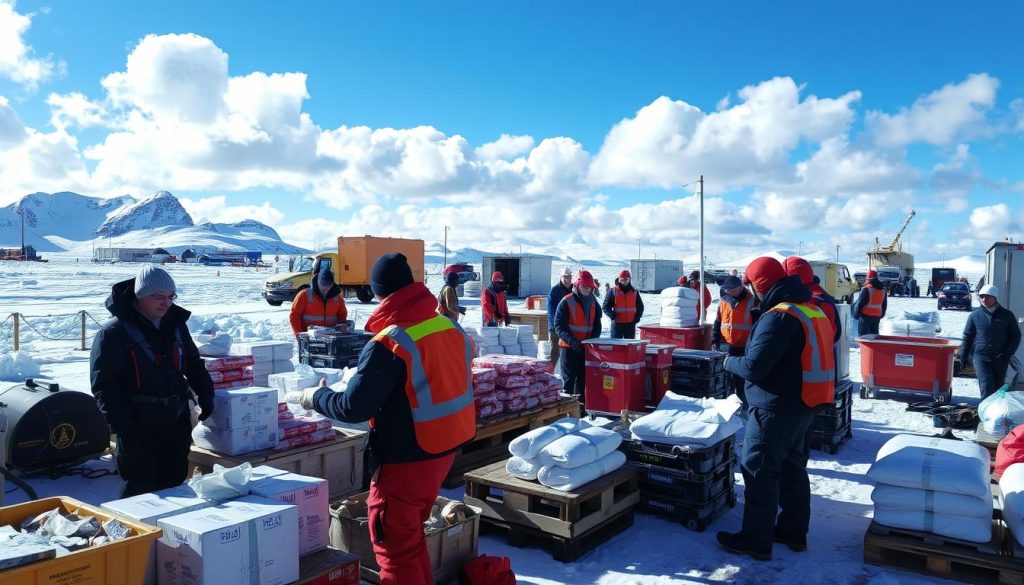
Operating in Antarctica comes with its own set of challenges, mainly because of the strict rules there. These are in place to protect the environment. To do business, you have to follow a set of international agreements known as the Antarctic Treaty System. It’s there to help science thrive but also to keep the wilderness safe.
There are a few key things every business must do:
- Get the right permits, including checks on the environmental impact.
- Stick to the rules of shipping and getting around in Antarctica.
- Make plans to deal with waste carefully, to keep the place clean.
- Train all staff well about how to look after nature and stay safe.
If you don’t follow the rules, the consequences are pretty serious. You might lose your permits or face big fines. So, it’s crucial for firms to really understand these rules and apply them in what they do.
Marketing Strategies for Antarctic Supply Businesses
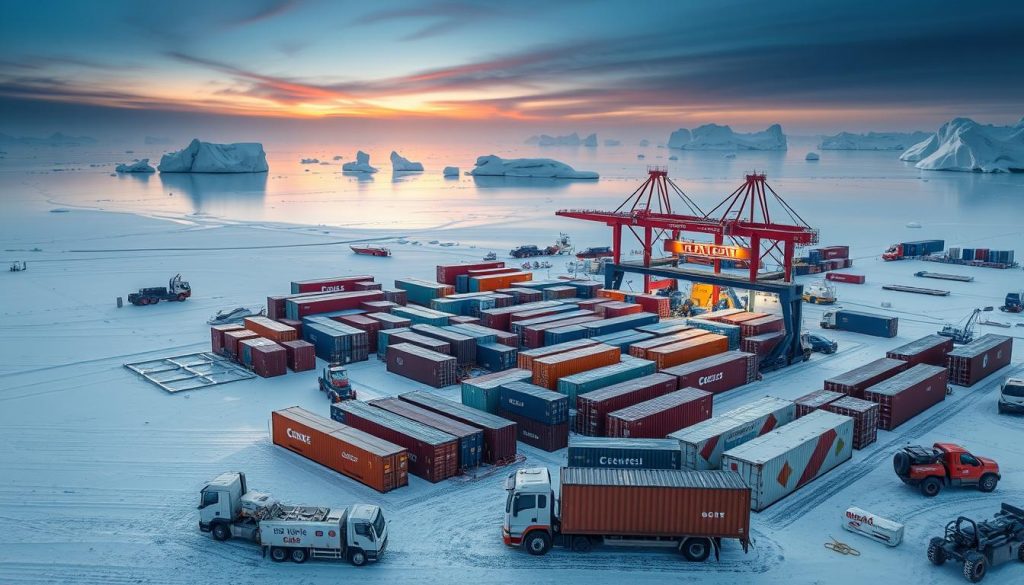
For businesses eager to succeed in the Antarctic market, crafting effective marketing strategies is key. Targeting specific groups, like researchers and supporting organisations, is smart. This method ensures the marketing message reaches those in need of supplies for their Antarctic projects.
Targeting Niche Audiences
Knowing what niche audiences in the Antarctic need is crucial for marketing success. These customers look for products that can handle the extreme cold. By pinpointing and catering to these needs, companies can solidify their market presence. They can use various strategies to achieve this.
- Conducting market research to identify potential customer segments.
- Developing tailored messaging that resonates with researchers and supporting organisations.
- Engaging in partnership initiatives to better meet the needs of specific audiences.
Utilising Digital Marketing Tools
Using digital tools for marketing opens many doors for reaching Antarctic research stations. It makes it easier to connect with the right audience and boost engagement. Some of the best tools include:
- Social media marketing to build community and foster relationships with potential customers.
- Email campaigns that provide updates on products and services specifically designed for Antarctic conditions.
- Content marketing that highlights expertise in Antarctic supply management and product efficacy.
Future Trends in Antarctic Supply Businesses
The Antarctic supply market is about to change a lot. Companies are getting ready for new demands and tech improvements. A key trend is the use of more robots and AI. This makes things faster and safer, cutting down on delays and dangers from the harsh weather.
Also, being green is now vital for success. As people become more eco-aware, companies must use Earth-friendly methods. This means using renewable energy and creating less waste with smart packaging. Going green is not just good for the planet. It also meets rules and matches what researchers in Antarctica value.
Lastly, digital tech will make supply chains better. With new software, keeping track of supplies and predicting needs gets easier. This helps respond quickly to what Antarctic research stations require. Knowing these trends helps businesses stay ahead and support Antarctica’s sustainable growth.

